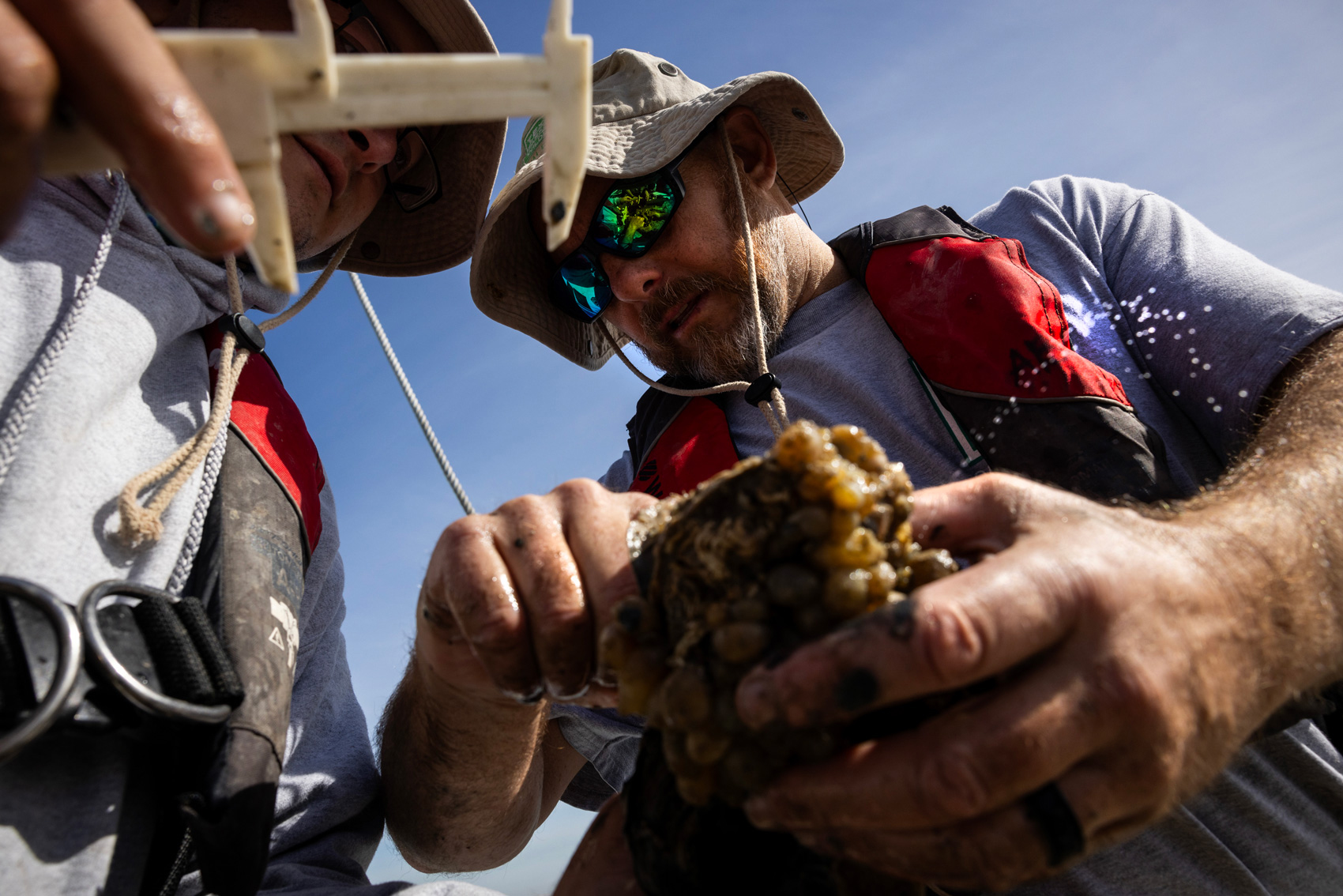|
Getting your Trinity Audio player ready...
|
It takes almost no time at all for the looming mountain of oyster shells to begin collapsing on the boat. The gray tower is twice the height of the crew, but it teeters as two men with water cannons blast the base at high pressure, pushing recycled oyster shells out the open sides of the boat and into Galveston Bay, where they settle deep into the ocean muck.
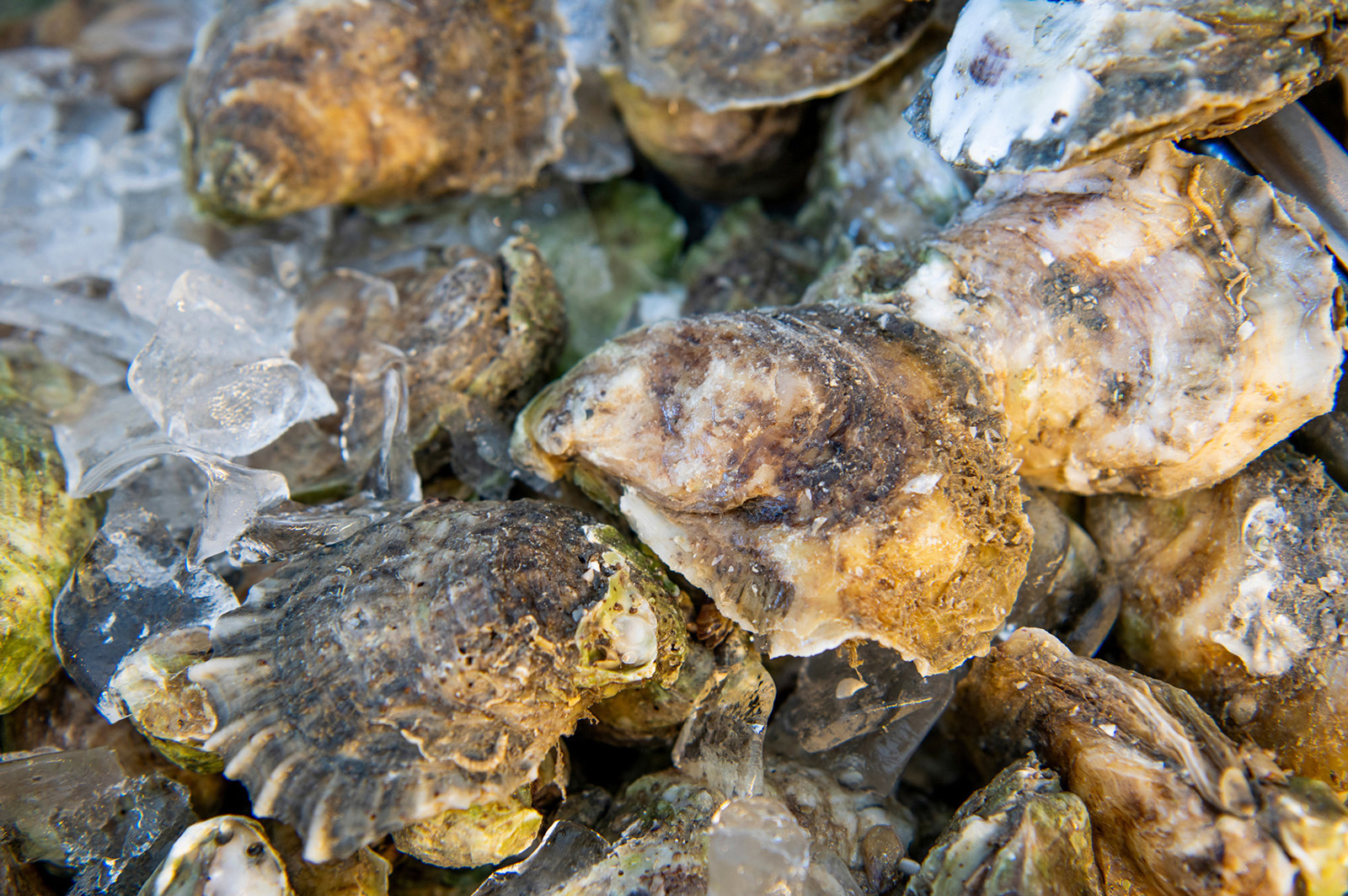
Humberto Jiron, 58, is steering the boat in circles, spinning again and again in unique patterns so that the shells are spread out evenly.
The crew is only about a quarter mile from the pier at a spot called Rett Reef near San Leon, Texas. He instructs the crew – Herardo Carmargo and Antonio Morales – where to direct their hoses. It takes about a half hour for the entire pile to drop into the water. Jiron directs the boat back to the dock quickly. They aren’t done yet.
Waiting on shore is another 300 tons of oyster shells.
Jiron and the others work for Prestige Oysters, a Gulf Coast oyster processor and distributor company in Dickinson, Texas. This week, the men are restoring Rett Reef to its original ecological state. This means dumping oyster shells and rocks to the bottom of the reef to create new and healthy oyster habitat. The reef has been barren of typical sea life since Hurricane Ike decimated the bay in 2008.
It wouldn’t be the first time Prestige Oysters would restore a reef like this, but usually the company dumps shells and rocks at their privately leased oyster harvesting reefs in Texas and Louisiana – of which they own 80,000 acres.
This time, however, the company, along with the Nature Conservancy of Texas, Texas Sea Grant and the Halili family of Pier 6 Seafood and Oyster House and the San Leon Oyster Festival, are working together to restore a public reef in the first ever private industry, public conservancy oyster partnership in Texas.
And unlike the private reefs, there will be no oyster harvesting at Rett Reef. Once the reef hopefully bounces back, it’ll be used solely for sport fishing and oyster habitat.
Immediately upon arriving back at the dock, a bulldozer scoops up more oysters from the pier and dumps them onto the now empty boat. The team will go until late afternoon today and continue the process tomorrow. It’s a rhythm of scooping, dumping and spraying all day long – one that Jiron is used to.
“It’s good what we’re doing here,” Jiron said. “With spraying the shell at this reef, we’ll be able to bring the oysters back to grow and thrive.

Bringing oysters back to Galveston Bay
Lisa Halili first had the idea of restoring an oyster reef back in 2016.
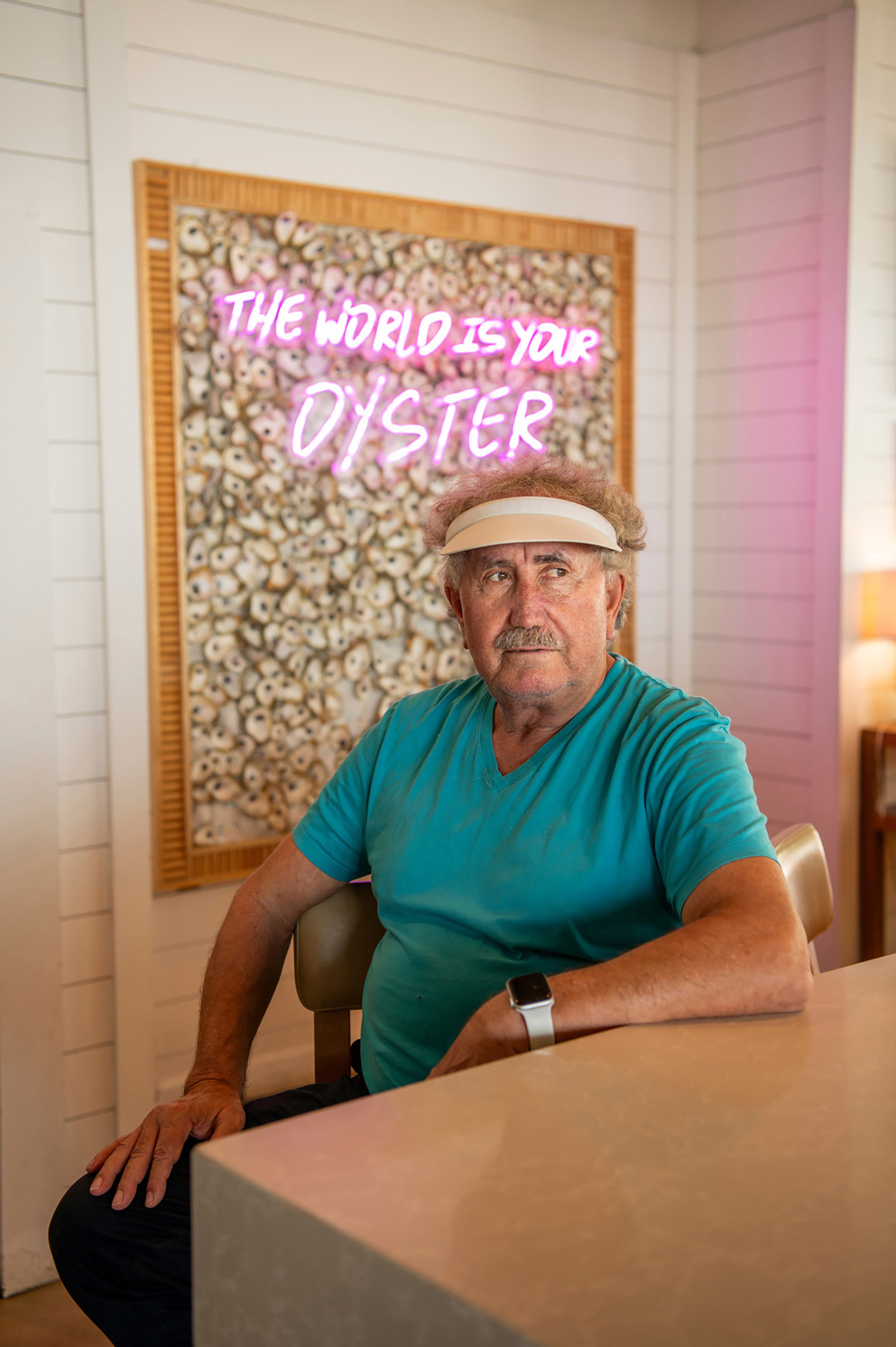
A Texas native, she had for years worked in the oyster industry and saw first hand how important maintaining reef habitat was for both the entire bay ecosystem and the harvesters.
Halili, along with her husband, Johnny, owns Prestige Oysters and the Pier 6 Seafood and Oyster House – where just outside the restaurant is Rett Reef.
Before Hurricane Ike, the spot, originally called the San Leon Mareno Reef, was thriving with marine life – a hotspot for fishermen looking for a good catch.
But with the storm, a wave of sediment buried the oyster beds and the oysters suffocated under the mud.
“Oysters are a keystone species,” said Halili. “Baby shrimp and crabs will venture into those oyster reefs and then the bigger fish will go there to find food off of the reefs. The baby oysters will grow here, which will be non-harvestable, but will eventually spawn out the entire bay, which will help the harvestable parts.”
A use for old oyster shells
Since 2020, the restaurant has collected the leftover shells from the oysters customers eat. They began piling them in the parking lot, creating a massive mound of oyster shells. Halili then connected with the Nature Conservancy of Texas after explaining she was having trouble getting the necessary permits at an oyster management and restoration workgroup hosted by the Texas Parks and Wildlife Department.
Members of the Nature Conservancy, who have done their own work in oyster habitat restoration, partnered with the Halilis and helped them get their restoration and research permits for the reef.
Finally, after nearly four years of collecting shells and filing paperwork, the team could begin launching the shells into the bay. Halili called the spot Rett Reef to spread awareness for Rett Syndrome, a very rare genetic, neurological disorder in young girls.
“Our role here is really trying to see how the oyster industry restores a reef and how they manage the reef afterward,” said Kathy Sweezey, coastal restoration project manager for the Nature Conservancy. “They have this local ecological knowledge of people who are on the water all the time and have spent sometimes their entire lives working with oysters. It’ll be different from what we normally do as restoration practitioners.”
For years, tensions between the ecologists attempting to restore the bay and the industry attempting to harvest the bay has been fraught. The Texas Parks and Wildlife Department has shut down all the public reefs in Galveston Bay for this oyster season, leaving many commercial and recreational harvesters struggling to make ends meet. Harvesters have protested decisions made by the wildlife department at the state capital over oyster season.
Sweezey hopes that partnering industry with research could bring a new atmosphere to the contentious issue.
“In the end, we all want the same thing,” Sweezy said. “And that’s a healthy bay.”

How to build an oyster reef
In a bulldozer, Gezim Halili scoops up a large chunk of oyster shells and drives across the Pier 6 parking lot, down a slight slope and deposits them in a pile near the boat. Then another bulldozer, manned by a Prestige crewmember, moves it to the boat – which can hold around 100 or more tons of shells.
The process then begins again.
Old oyster shells create a bed for new baby oysters to attach and grow. Without these shells and without habitat, the babies will struggle to survive or swim elsewhere to find a home – depleting the population.
The Prestige team layers the reef floor with a base of oyster shells, creating a firm foundation for the new oysters. They then top it off with a layer of rocks, adding height and stability to prevent the oysters from sinking into the soft bottom mud. The oyster babies can latch onto a rock because of its similarity to shells.
Halili, 32, is the nephew of Johnny and Lisa and fleet captain for Prestige and Pier 6. For years, he’s helped manage the privately owned reefs the company leases, so he understands the importance of empty shells and rocks on the bay floor.
“We usually bring the empty shells we’ve collected back to the leased reef so we can have a harvestable reef next season,” he said. “All of these here piled, my aunt donated for this reef.”
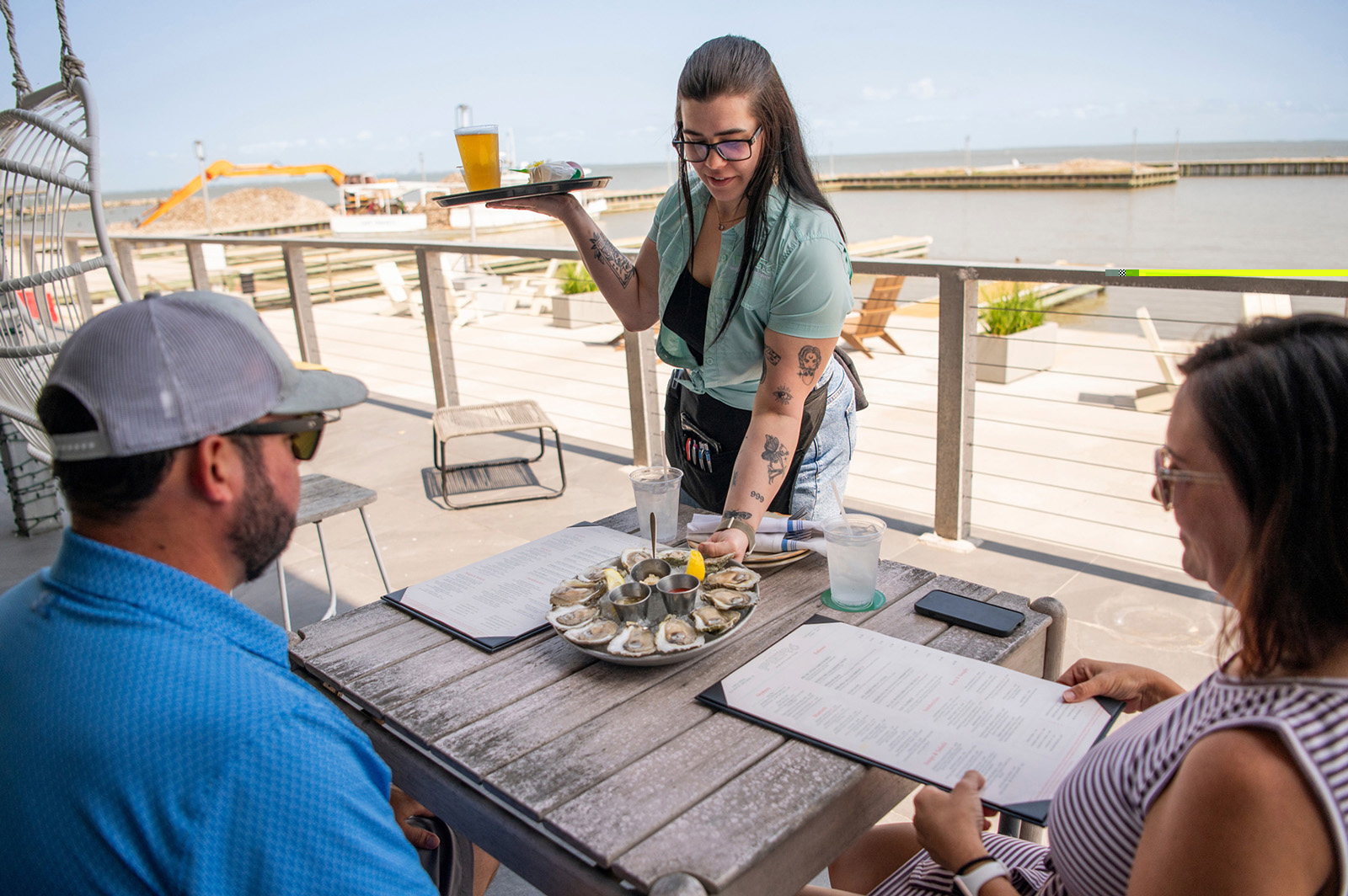
How oysters benefit an entire ecosystem
The oysters that grow on Rett Reef will have their own baby oysters, which generally can swim long distances before settling on some rock or old shell. They could also remain at the harvestable reefs, which will help the industry with their numbers.
Oysters are vital to coastal ecosystems. They are natural water filters – removing toxins and other pollutants from the water – and protect shorelines by absorbing wave energy and reducing erosion. Which is why the reef is also important for the future and for other restoration projects – which could emulate Rett Reef.
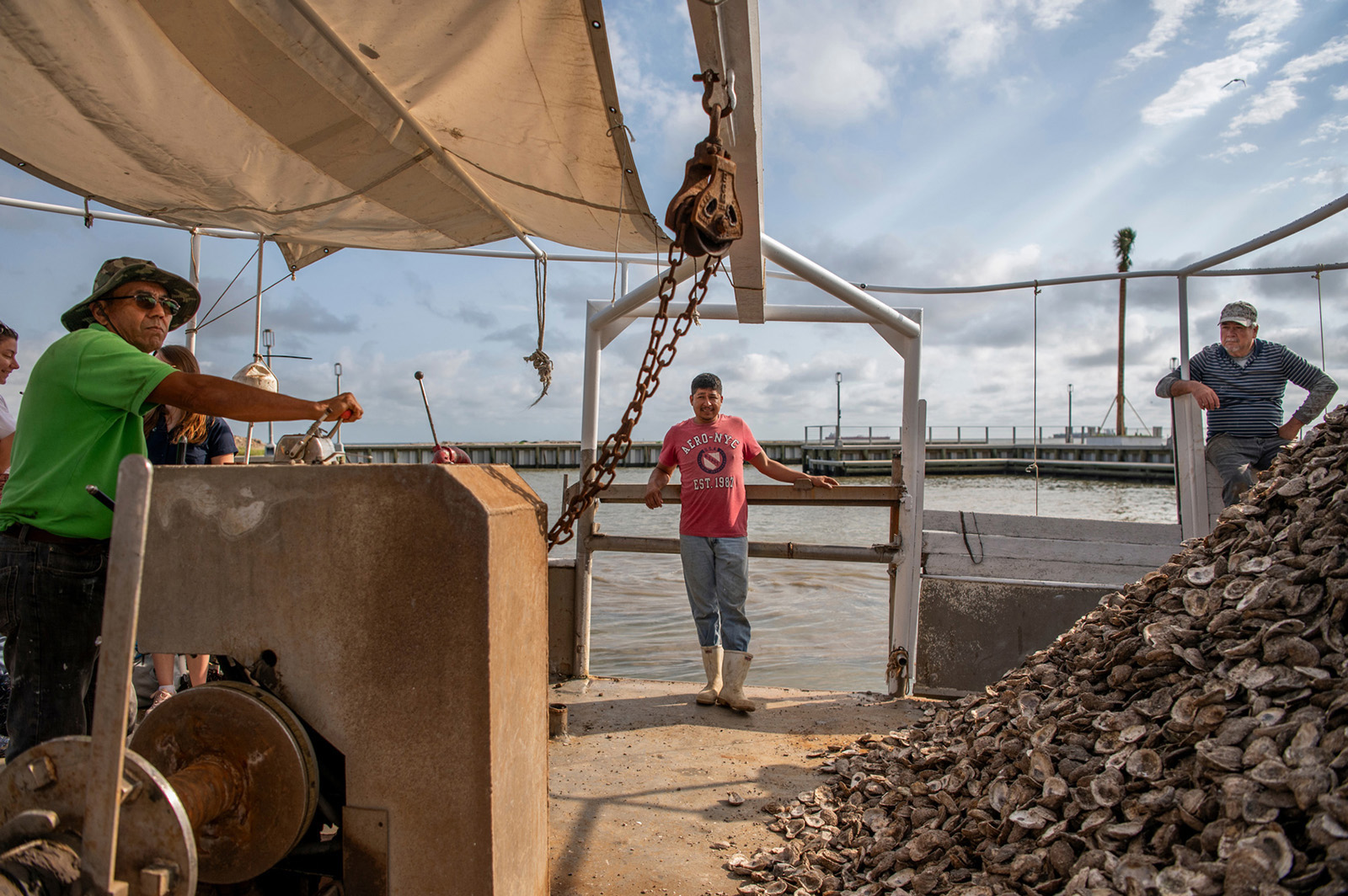
After three months, Sweezey and the team at the Nature Conservancy will go back and see how the new oyster habitat is doing by measuring the size and health of the oysters.
“If we start to see the success of the oyster restoration project, we will know how to adjust going forward,” Sweezey said. “Hopefully this will empower other industry members, like Prestige, to do something similar and hopefully we can all see the benefit of the non-harvestable reefs in conjunction with the harvestable reefs.”
That is all in the future, however. There is a lot of waiting in the meantime, and bulldozers, and blasting water cannons at oyster shells.
Umberto, after spinning his boat around in circles for a half hour, slows it down and helps get the space in order. There are several loose oyster shells in the cracks and crevices of the boat.
“This,” he said, gesturing to the boat and the oysters and the bay, “is the best way to do it.”


